The Cabbage Palm, also known as Cabbage Tree, Cornish Palm, Giant Dracaena, New Zealand Cabbage Tree, Torbay Palm, or Torquay Palm, is a versatile perennial tree belonging to the Asparagaceae family. Native to New Zealand, this subtropical plant is well-suited for hardiness zones 9 to 11. With its striking, palm-like appearance, the Cabbage Palm is a popular choice for sunny borders, courtyards, and coastal gardens.
Renowned for its resilience, this tree thrives in fertile, well-drained soil and demonstrates excellent salt and drought tolerance, making it ideal for various landscapes, including container planting. During late spring to early summer, it produces clusters of small, fragrant white flowers, adding a touch of elegance to its surroundings.
| Common name | Cabbage Palm, Cabbage Tree, Cornish Palm, Giant Dracaena, New Zealand Cabbage Tree, Torbay Palm, Torquay Palm |
| Botanical name | Cordyline australis |
| Family | Asparagaceae |
| Species | australis |
| Origin | New Zeland |
| Life cycle | Perennial |
| Plant type | Tree |
| Hardiness zone | 9, 10, 11 |
| Sunlight | Full Sun |
| Maintenance | Low |
| Soil condition | Clay |
| Soil ph | Acid |
| Drainage | Well-Drained |
| Growth rate | Medium |
| Spacing | 3 ft. – 6 ft. |
| Harvest time | Fall |
| Flowering period | Spring |
| Height | 6 ft. – 30 ft. |
| Flower color | White |
| Leaf color | Gray, Silver |
| Fruit color | White |
| Fruit type | Berry |
| Flower benefit | Fragrant |
| Garden style | Cottage Garden |
| Uses | Coastal |
I. Appearance and Characteristics
Cordyline australis, commonly known as the cabbage tree, or by its Māori name of tī or tī kōuka, is a widely branched monocot tree endemic to New Zealand.
Cordyline australis was collected in 1769 by Sir Joseph Banks and Dr Daniel Solander, naturalists on the Endeavour during Lieutenant James Cook’s first voyage to the Pacific. The type locality is Queen Charlotte Sound / Tōtaranui. It was named Dracaena australis by Georg Forster who published it as entry 151 in his Florulae Insularum Australium Prodromus of 1786. It is sometimes still sold as a Dracaena, particularly for the house plant market in Northern Hemisphere countries. In 1833, Stephan Endlicher reassigned the species to the genus Cordyline.
Cordyline australis grows up to 20 metres (66 feet) tall with a stout trunk 1.5 to 2 m (4 ft 11 in to 6 ft 7 in) in diameter. Before it flowers, it has a slender unbranched stem. The first flowers typically appear at 6 to 10 years old, in spring. The right conditions can reduce the first flowering age to 3 years (Havelock North, 2015 mast year).
After the first flowering, it divides to form a much-branched crown with tufts of leaves at the tips of the branches. Each branch may fork after producing a flowering stem. The pale to dark grey bark is corky, persistent and fissured, and feels spongy to the touch.
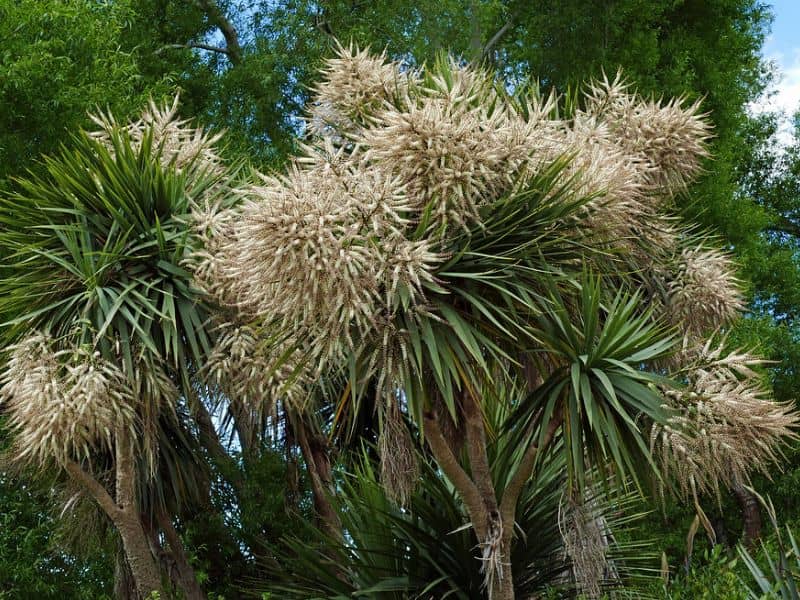
The long narrow leaves are sword-shaped, erect, dark to light green, 40 to 100 cm (16 to 39 in) long and 3 to 7 cm (1 to 3 in) wide at the base, with numerous parallel veins. The leaves grow in crowded clusters at the ends of the branches, and may droop slightly at the tips and bend down from the bases when old. They are thick and have an indistinct midrib. The fine nerves are more or less equal and parallel. The upper and lower leaf surfaces are similar.
In spring and early summer, sweetly perfumed flowers are produced in large, dense panicles (flower spikes) 60 to 100 cm (24 to 39 in) long, bearing well-spaced to somewhat crowded, almost sessile to sessile flowers and axes. The flowers are crowded along the ultimate branches of the panicles. The bracts which protect the developing flowers often have a distinct pink tinge before the flowers open. In south Canterbury and North Otago the bracts are green.
The individual flowers are 5 to 6 mm (3⁄16 to 1⁄4 in) in diameter, the petals are free almost to the base, and reflexed. The stamens are about the same length as the petals. The stigmas are short and trifid. The fruit is a white berry 5 to 7 mm (3⁄16 to 9⁄32 in) in diameter which is greedily eaten by birds. The nectar attracts great numbers of insects to the flowers.
Large, peg-like rhizomes, covered with soft, purplish bark, up to 3 meters (10 feet) long in old plants, grow vertically down beneath the ground. They serve to anchor the plant and to store fructose in the form of fructan. When young, the rhizomes are mostly fleshy and are made up of thin-walled storage cells. They grow from a layer called the secondary thickening meristem.
Cordyline australis is a light-demanding pioneer species, and seedlings die when overtopped by other trees. To grow well, young plants require open space so they are not shaded out by other vegetation. Another requirement is water during the seedling stage. Although adult trees can store water and are drought resistant, seedlings need a good supply of water to survive.
This stops the species from growing in sand dunes unless there are wet depressions present, and from hillsides unless there is a seepage area. The fertility of the soil is another factor—settlers in Canterbury used the presence of the species to situate their homesteads and gardens. The fallen leaves of the tree also help to raise the fertility of the soil when they break down. Another factor is temperature, especially the degree of frost. Young trees are killed by frost, and even old trees can be cut back. This is why C. australis is absent from upland areas and from very frosty inland areas.
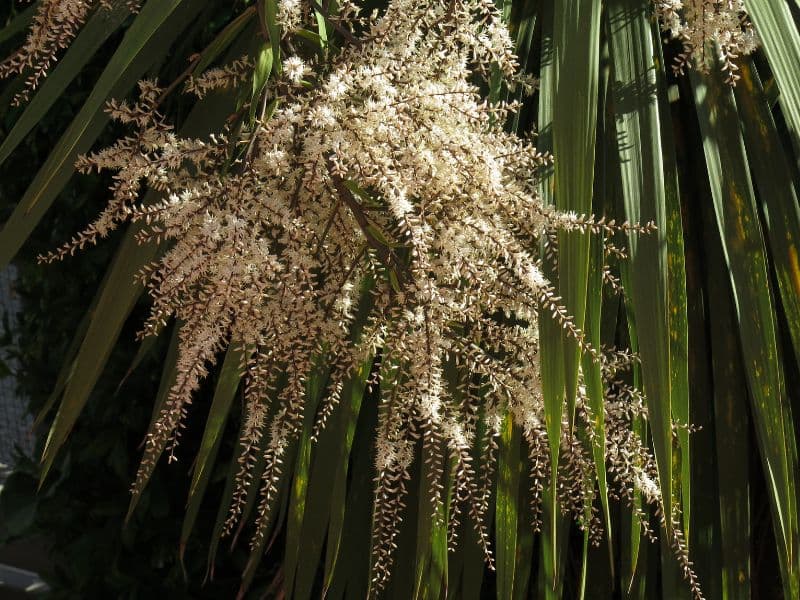
Response to fire
Cordyline australis is one of the few New Zealand forest trees that can recover from fire. It can renew its trunk from buds on the protected rhizomes under the ground. This gives the tree an advantage because it can regenerate itself quickly and the fire has eliminated competing plants. Cabbage tree leaves contain oils which make them burn readily. The same oils may also slow down the decay of fallen leaves, so that they build up a dense mat that prevents the seeds of other plants from germinating.
When the leaves do break down, they form a fertile soil around the tree. Cabbage tree seed also has a store of oil, which means it remains viable for several years. When a bushfire has cleared the land of vegetation, cabbage tree seeds germinate in great numbers to make the most of the light and space opened up by the flames.
Older trees sometimes grow epicormic shoots directly from their trunks after storm or fire damage. Aerial rhizomes can also be produced from the trunk if it sustains damage or has become hollow and grow down into the soil to regenerate the plant. Such regeneration can lead to trees of great age with multiple trunks.
II. How to Grow and Care
Sunlight
Cabbage tree thrives best in full sun conditions, receiving at least 6 hours of direct sunlight daily for optimal growth and flowering. While enjoying bright light, cabbage tree is tolerant to partial sun, adapting to less intense light without significant detriment to its health. However, prolonged exposure to low light may hinder the cabbage tree’s robustness and reduce flowering potential.
Outdoors, cabbage tree should be positioned in a location that receives ample sunlight. If grown indoors, a south-facing window is ideal to ensure sufficient light for healthy development. Cabbage tree’s adaptability to light conditions, nonetheless, showcases its resilience as a decorative and robust plant.
Temperature
While the plant is not classed as completely hardy, mature plants will survive the winter months outdoors in milder regions. The cabbage tree will survive in temperatures between 5 to 15 ℃, but thrives in temperatures above 16 ℃. Mature plants may survive down to -5 ℃ for short periods, but if the temperature drops to below 1 ℃ for long periods, then the health of the plant may begin to suffer.
If growing indoors, be sure to move your plant away from any cold drafts, particularly when the temperature drops. Though mature plants are capable of surviving the winter, younger plants are more prone to frost damage.
The cabbage tree is fairly easy to care for if you pay attention to how much you water your plant to prevent the soil from drying out. This will depend on your local environment and humidity levels.
Watering
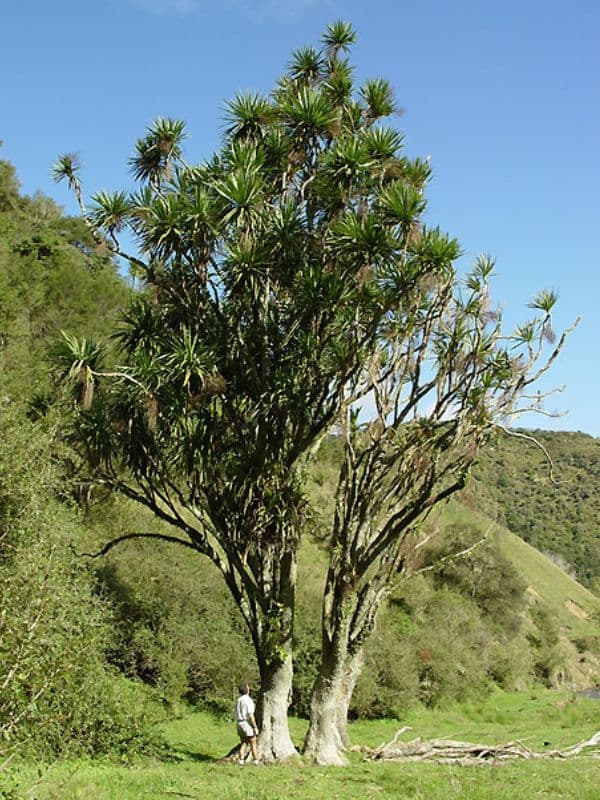
Native to the temperate coastal regions of New Zealand, cabbage tree thrives in conditions that mimic its natural habitat—moderate humidity and regular rainfall. This species is resilient to occasional dry spells but maintains a preference for consistent moisture without waterlogging. Watering should be adjusted to once every 1-2 weeks, allowing the soil to dry slightly between sessions. As an outdoor plant often used in landscaping, cabbage tree benefits from mulching which helps retain soil moisture, especially during its active growing season.
Soil
The optimum soil for your cabbage tree is a rich, well-draining soil with a pH value between 6-6.5, so slightly acidic. Because it needs a soil that holds nutrients well, an open mix containing bark would not be suitable. Instead, a mix containing 50% loam along with some sand, chalk, peat, or clay would be the best choice. This will ensure that the soil does not dry out too quickly.
Fertilizing
For cabbage tree, utilize high nitrogen fertilizers to boost leaf growth and vitality. Apply every 2-3 months during growing season, reducing in cooler months when growth slows. Use diluted solutions to prevent root burn, respecting labeled dosage guidelines. During growth spurts, adjust frequency to support development, easing back in dormancy. Apply after watering, ensuring even distribution around the base, avoiding direct contact with foliage. This regime achieves robust health, supporting cabbage tree’s natural vigor and foliage display.
Pruning
Very little regular pruning is needed for your cabbage tree, as the plant will naturally shed its older leaves. Simply cut away any yellowing or withered leaves and overgrown stems to maintain a tidy appearance. Although you can prune your cabbage tree at any time of the year, it might be best to wait until late spring if you live in a colder climate. This is because the leaves can offer some frost protection to the plant before the warmer weather arrives.
Once the cabbage tree has matured, it may flower every year in early summer, producing sweet-smelling, cup-shaped flowers that are often followed by berries. Once spent, you should cut back the dead flower stems using a sharp knife or secateurs. A sharp knife should also be used when cutting back dead leaves – if you pull the leaves off, this can cause severe damage to the main stem.
If your cabbage tree becomes too tall for your taste, you can simply cut it down to your preferred height. Use a sharp pair of shears, leaving just the bare stem. This should be done at the beginning of spring.
Propagation
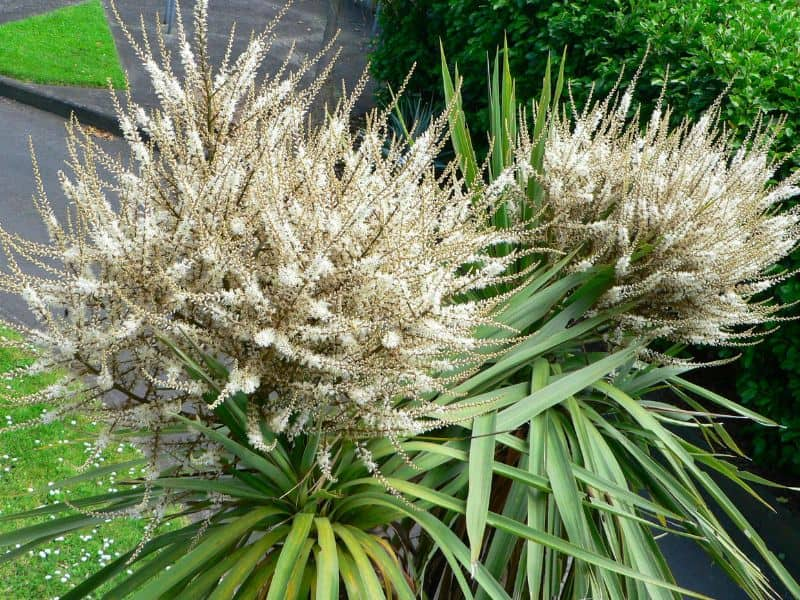
The cabbage tree is not the easiest plant to propagate. Because of this, many people choose to buy a young plant instead.
If you decide to propagate from a cutting, then you should do so in early spring for the best chance of success. Using a sharp knife, cut the shoots as close to the main stem as you are able. Trim the leaves back until all you have are two or three emerging leaves, and then insert the cutting into a well-draining potting mix.
Place the pot with the cuttings in a large, clear plastic bag and put it in a place that has good, but not direct, sunlight. Within two months, roots should develop. Your plant can then be put into a larger container, or straight into the ground if you live in a warm climate.
Overwintering
Cabbage tree, native to New Zealand, flaunts its hardiness to cold climates with its unique ability to survive temperatures as low as -15°C. This evergreen marvel naturally pulls through winter with few needs, but mulching and a sheltered spot ensure it sails through the coldest months unscathed. The gardener’s main role is watching for severe conditions that could threaten the cabbage tree’s robustness.
Repotting
Repotting the cabbage tree every 2-3 years supports its growth as a tall, tree-like plant. Spring is ideal, aligning with its active growth phase. Select a pot that is 20-25% larger to accommodate its roots and support upright growth. Post-repotting, ensure well-drained soil and regular watering to prevent stress. A balanced, friendly environment will allow cabbage tree to thrive after the transition.
III. Uses and Benefits
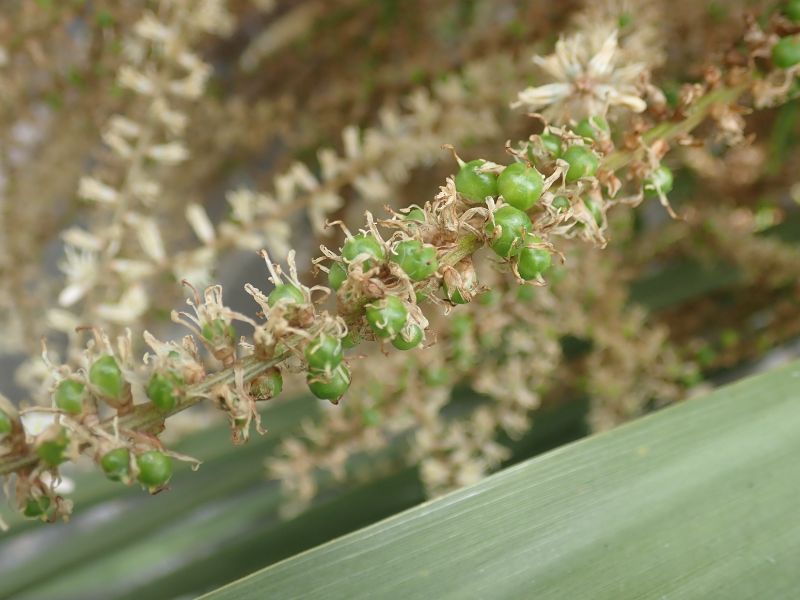
- Ornamental uses
Cabbage tree is used in coastal and Mediterranean gardens, often planted along sunny borders or in sheltered beds. It also makes an excellent container plant for use in courtyards and patio gardens. The hardy plant is prized for its resistance to most diseases. It is also resistant to deer and other common garden pests.
- Medicinal uses
The Māori used various parts of Cordyline australis to treat injuries and illnesses, either boiled up into a drink or pounded into a paste. The kōata, the growing tip of the plant, was eaten raw as a blood tonic or cleanser. Juice from the leaves was used for cuts, cracks and sores. An infusion of the leaves was taken internally for diarrhoea and used externally for bathing cuts. The leaves were rubbed until soft and applied either directly or as an ointment to cuts, skin cracks and cracked or sore hands. The young shoot was eaten by nursing mothers and given to children for colic. The liquid from boiled shoots was taken for other stomach pains. The seeds of Cordyline australis are high in linoleic acid, one of the essential fatty acids.
- Culinary uses
The stems and fleshy rhizomes of C. australis are high in natural sugars and were steam-cooked in earth ovens (umu tī, a large type of hāngī) to produce kāuru, a carbohydrate-rich food used to sweeten other foods. The growing tips or leaf hearts were stripped of leaves and eaten raw or cooked as a vegetable, when they were called kōuka—the origin of the Māori name of the tree. The southern limit of kūmara (sweet potato) cultivation was at Banks Peninsula at 43°S, and south of there a culture developed around C. australis. Natural and planted groves of the cabbage tree were harvested.
Large parties trimmed the cut stems and left them to dry for days or weeks. As well as stems, the rhizomes—extensions of the trunk below the surface of the ground shaped like enormous carrots—were also dug up to be cooked. In the early 1840s, Edward Shortland said Māori preferred rhizomes from trees growing in deep rich soil. They dug them in spring or early summer just before the flowering of the plant, when they were at their sweetest. November was the favorite month for preparing kāuru in the South Island.
After drying, the harvested stems or rhizomes were steamed for 24 hours or more in the umu tī pit. Steaming converted the carbohydrate fructan in the stems to very sweet fructose. The cooked stems or rhizomes were then flattened by beating and carried back to villages for storage.
Kāuru could be stored dry until the time came to add it to fern root and other foods to improve their palatability. The sugar in the stems or rhizomes would be partially crystallized, and could be found mixed in a sugary pulp with other matter between the fibres of the root, which were easily separated by tearing them apart. Kāuru could also be dipped in water and chewed and was said to smell and taste like molasses.
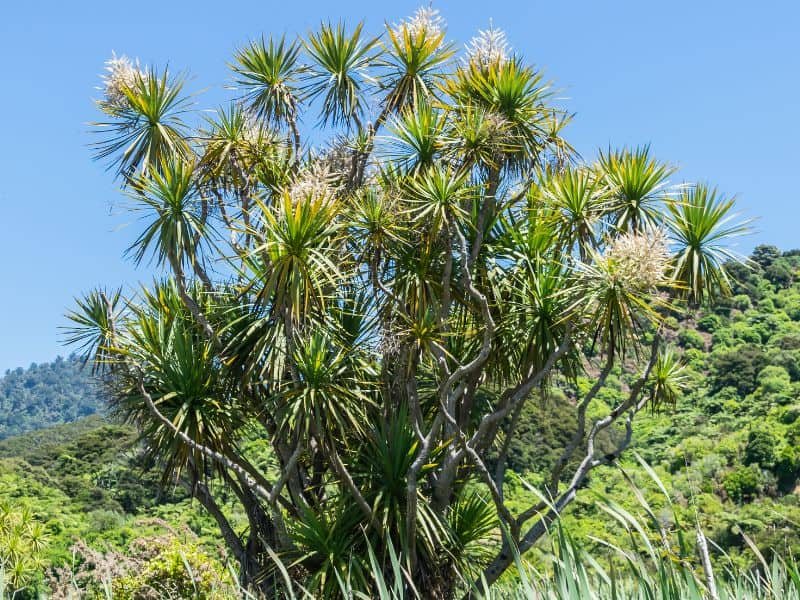
Evidence of large cooking pits (umu tī) can still be found in the hills of South Canterbury and North Otago, where large groves of cabbage trees still stand. Europeans used the plant to make alcohol, and the often alcoholically potent brews were relished by whalers and sealers.
The kōata, the growing tip of the plant, was eaten raw as medicine. When cooked, it was called the kōuka. If the spike of unopened leaves and a few outer leaves is gripped firmly at the base and bent, it will snap off. The leaves can be removed, and what remains is like a small artichoke heart that can be steamed, roasted or boiled to make kōuka, a bitter vegetable available at any time of the year.
Kōuka is delicious as a relish with fatty foods like eel, muttonbirds, or pigeons, or in modern times, pork, mutton and beef. Different trees were selected for their degree of bitterness, which should be strong for medicinal use, but less so when used as a vegetable.
- Other uses
A tough fibre was extracted from the leaves of C. australis, and was valued for its strength and durability especially in seawater. The leaves are suitable for weaving in its raw state, without any need to further process the fibres. The leaves were used for making anchor ropes and fishing lines, cooking mats, baskets, sandals and leggings for protection when travelling in the South Island high country, home of the prickly speargrasses (Aciphylla) and tūmatakuru or matagouri (Discaria toumatou). Because of the water-resistant properties of the plant, the leaves were traditionally used for cooking baskets.
Mōrere swings provided a source of amusement for Māori children. The ropes had to be strong, so they were often made from the leaves or fibre of C. australis, which were much tougher than the fibres of New Zealand flax. The leaves were also used for rain capes, although the mountain cabbage tree C. indivisa, was preferred. The fibre made from cabbage tree leaves is stronger than that made from New Zealand flax.
Find Where to Buy the Best Cabbage Tree (Cordyline australis)

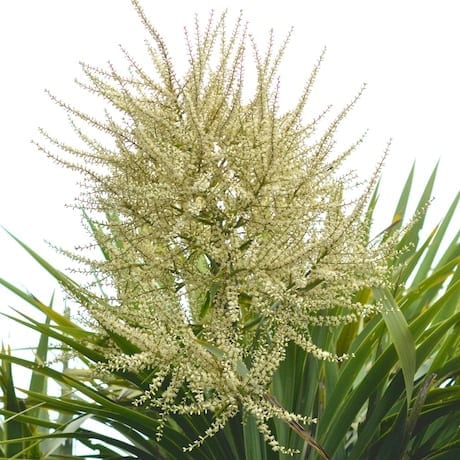



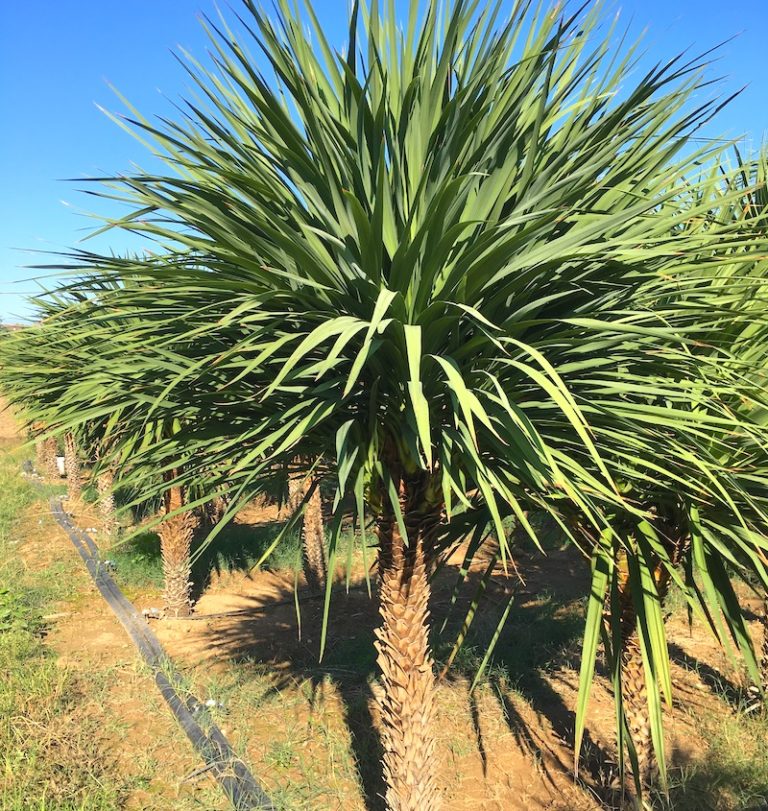
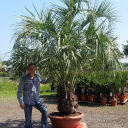











Leave a Reply